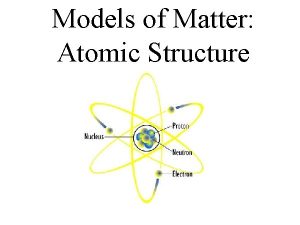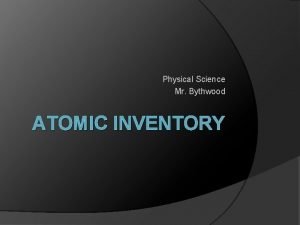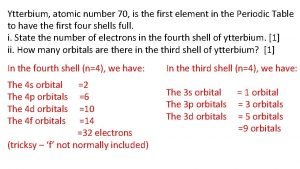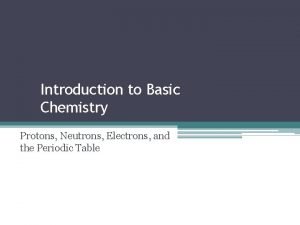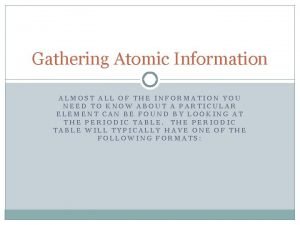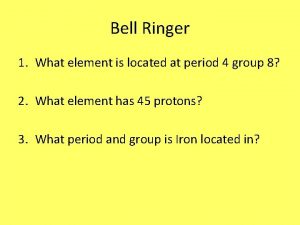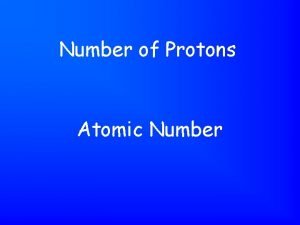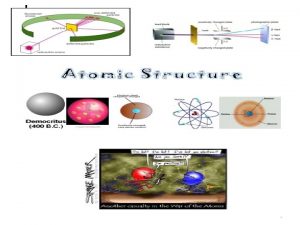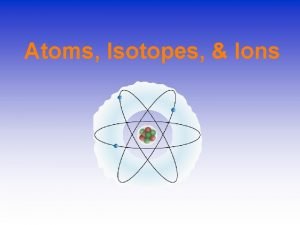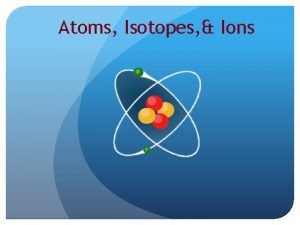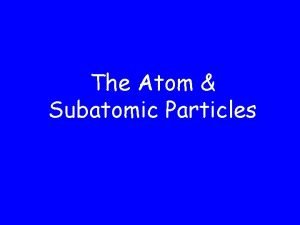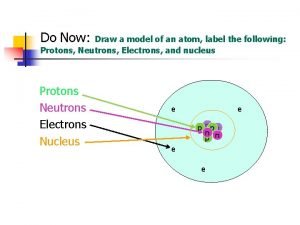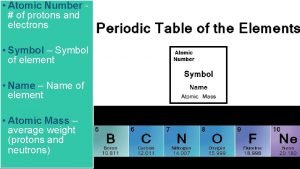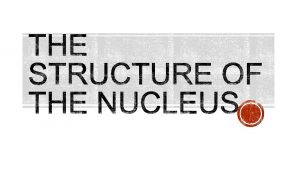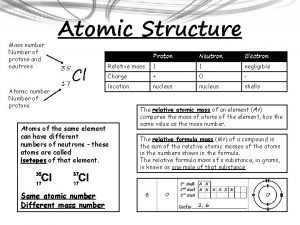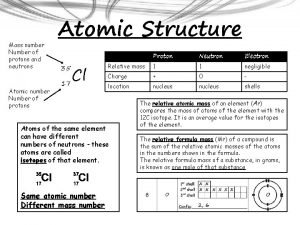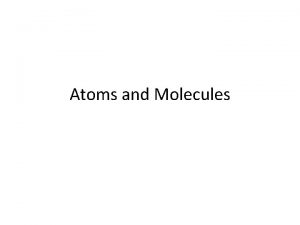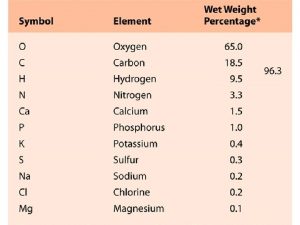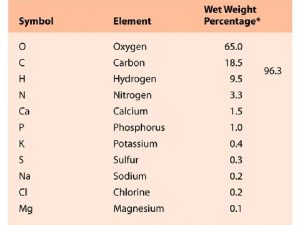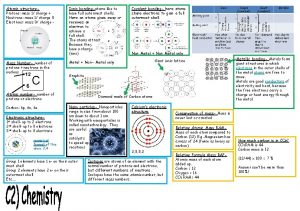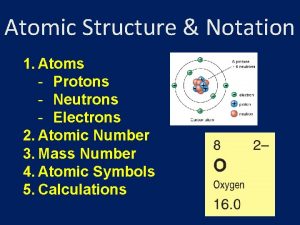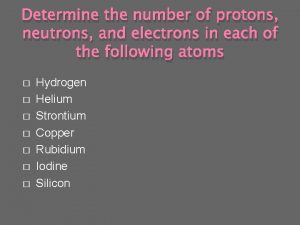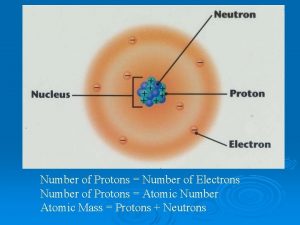Protons Mass Number and Atomic Mass Neutrons Electrons

Protons Mass Number and Atomic Mass Neutrons Electrons James Chadwick

James Chadwick, the student of Rutherford, performed experiments to verify the presence of neutrons within the nucleus of atoms. This was an important discovery that broadened our understanding of the atom and the mass of elements. James Chadwick Ernest Rutherford

Hydrogen-1 The discovery of the neutron led to the understanding that not every atom of an element is identical. Some atoms have a different number of neutrons. Atoms of the same element with different number of neutrons are isotopes known as ____. Hydrogen-2 Hydrogen-3

Understanding the mass of atoms: When discussing subatomic particles, scientists often talk about their relative masses. This just means how their masses compare. Relative Mass Protons Neutrons Electrons 1 1840

Understanding the mass of atoms: Because electrons are 1/1840 th the size of protons and neutrons, they are too small to concern ourselves with when we are discussing mass. Electrons 1 1840

Atoms get their MASS NUMBERS from the total number of protons and neutrons inside their nucleus. This is NOT the same thing as atomic mass. We will learn how they are related today. Hydrogen-2 Lithium-7 Helium-4

Mass number does NOT tell you the number of neutrons. This is also NOT on the periodic table because it is not consistent for every atom of an element. However, determining the number of neutrons for an isotope is a simple calculation. # of neutrons = mass number – atomic number 5 – 2 = 3 neutrons Helium-5

Knowing the number of protons and neutrons allows you to identify an isotope. Boron-11 5 protons and 6 neutrons = ________ 5 protons tells you that the element is Boron Mass Number = protons + neutrons 5 + 6 = 11 These are connected by a dash (-) to show that they belong together.

Determine how many neutrons are in each of the isotopes listed on your notes. 7 2 147 6 20 10 Write the names of the isotopes, including their mass numbers, on your notes. Mercury-201 Calcium-40 Zinc-65 Helium-5 Argon-40

Because atoms are so small, we use a very large number to talk about them. This number is known as Avogadro's number = 602 000 000 Avogadro's number = 6. 02 × 1023 particles is known as a mole of particles

Remember, the number of neutrons is not listed on the periodic table because it is not consistent for every atom. However the ratio of isotopes is consistent for a sample. Within a mole of atoms of an element, the percentage (%) of each isotope in the sample is very consistent. In a mole of chlorine, about 75% of the atoms are chlorine-35, and about 25% of the atoms are chlorine-37

In a mole of chlorine, about 75. 0% of the atoms are chloring -35, and about 25. 0% of the atoms are chlorine-37 Because the ratio of isotopes is consistent, the mass of 1 mole of an element is also consistent. The mass of 1 mole of an element is the atomic mass, and because it is consistent we can record it on the periodic table. The atomic mass can be calculated from the ratio of each isotope that is found in the element.

In a mole of chlorine, about 75. 0% of the atoms are chloring-35, and about 25. 0% of the atoms are chlorine-37 To calculate atomic mass from the composition of isotopes, you simply multiply the percentage by the mass number for each isotope then add them all together. (35 × 75. 0%) + (37 × 25. 0%) = 35. 5 grams It may be easier to type the percentages into your calculator as decimals. (35 × 0. 750) + (37 × 0. 250) = 35. 5 grams

In a mole of boron, about 80% of the atoms are boron-11, and about 20% of the atoms are boron-10 Photo by X. Vazquez 11 B = 80. 0% 10 B = 20. 0% What is the approximate atomic mass of Boron based on this data? (11 × 80. 0%) + (10 × 20. 0%) = 10. 8 grams

In a sample of an unknown element, X, the ratio of isotopes is examined. It is determined that 89. 80% of the sample is composed of 112 X, and the other 10. 20% is composed of 114 X. Based on this data, what would be the atomic mass of element X? (112 × 89. 80%) + (114 × 10. 20%) = 112. 2 grams

Let this simple little tune get stuck in your head, and you will always remember how to solve these problems. Mass times percentage plus mass times percentage Plus mass times percentage plus mass times percent…. Click Speaker to Listen Sing along as a class!
- Slides: 16
